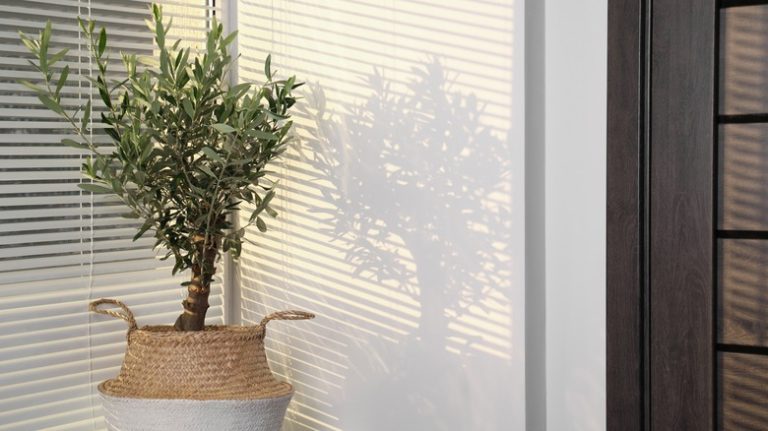Bonsai trees are miniature trees that are carefully cultivated to resemble their larger, full-grown counterparts. One essential task in the care and maintenance of bonsai trees is pruning. Pruning is a step-by-step process that involves trimming and shaping the tree to enhance its growth and overall appearance.
When it comes to pruning bonsai trees, it is necessary to understand the different parts of the tree. The bark, usually thinner than that of regular trees, should be carefully protected to avoid any damage. Pruning techniques include removing unwanted shoots, shortening each branch, and removing any dead or decaying leaves or twigs.
One key point to remember while pruning bonsai trees is to use the right tools. Shears or concave cutters, specifically designed for bonsai, should be used to make clean cuts. It is important to notice that pruning should only be done during the appropriate times, as different types of trees have specific pruning seasons.
Another important aspect of pruning bonsai trees is the aftercare. After removing any unwanted branches or shoots, it is recommended to apply a paste or wound sealant to the wounds to prevent any infections. This paste forms a protective layer where the cuts were made and supports the healing process.
Pruning bonsai trees can be a challenging task, especially for beginners. However, with practice and the right techniques, anyone can master the art of pruning. By following this step-by-step guide and keeping these tips in mind, you can ensure that your bonsai trees grow healthy and beautiful, maintaining their desired shape for years to come.
How To Trim A Bonsai Tree
Pruning is an essential part of shaping and maintaining a bonsai tree. Each bonsai tree has its own unique growth pattern, and regular pruning helps to keep the tree in the desired shape. Trimming the branches and twigs not only helps to maintain the size and shape of the tree, but also promotes healthy growth.
Here is a step-by-step guide on how to trim a bonsai tree:
- First, you need to determine the direction you want the tree to grow. This will guide you in deciding which branches and twigs to prune. Each cut should be made carefully, considering the tree’s natural growth pattern and the desired shape.
- When trimming, it is important to understand how the tree grows. Bonsai trees usually have a central trunk from which smaller branches and twigs shoot. These shoots should be pruned regularly to prevent the tree from becoming too dense.
- While pruning, always remember the rule of “less is more”. It’s better to make a few small cuts than one big cut. If you need to shorten a branch or twig, do it gradually over several times rather than all at once.
- It’s also important to remove any dead or weak branches. This not only improves the tree’s appearance, but also helps to redirect energy to the healthy ones.
- When pruning a bonsai tree, consistency is key. Regular pruning will help the tree maintain its desired shape and size. However, be careful not to over-prune, as this can weaken the tree.
- Some bonsai tree species, such as pines, require a special pruning technique called “candling”. This involves removing the new growth shoots in early summer to promote better branching.
- Pruning should be done while the tree is in dormancy, usually during late winter or early spring. This is the time when the tree’s growth is slow and it is less susceptible to damage.
- Remember to always use clean and sharp pruning tools to minimize damage to the tree. Clean the tools before and after each use to prevent the spread of diseases.
- When removing a branch or twig, make the cut just above the branch collar, which is the swollen area where the branch meets the trunk. Cutting too close to the trunk can cause damage, while cutting too far away can leave a large stub.
- After pruning, it’s important to care for the tree properly. This includes watering, fertilizing, and repotting as needed. Each bonsai tree has its own specific care requirements, so do some research and find out what your tree needs.
Pruning is both an art and a science when it comes to bonsai trees. It requires attention to detail, patience, and an understanding of the tree’s growth patterns. By following the above rules and guidelines, you can learn how to trim a bonsai tree effectively and keep it healthy and beautiful for many years to come.
Source: [Insert source here]
Types of Bonsai Pruning
Pruning is an essential part of maintaining the beautiful and miniature appearance of bonsai trees. There are several types of pruning techniques that bonsai enthusiasts can use to shape and refine their trees.
1. Structural Pruning: This type of pruning is typically done when the bonsai tree is still young and growing. It involves cutting back the main trunk and branches to create a basic structure for the bonsai. By removing excessive growth, the tree can be trained to grow in a specific direction and size.
2. Maintenance Pruning: Maintenance pruning is done to maintain the shape and structure of the bonsai tree. It involves trimming back new shoots and branches to keep the tree in proportion and prevent it from becoming too dense. This type of pruning is usually done once or twice a year.
3. Styling Pruning: Styling pruning is a more advanced technique that is used to create specific styles and shapes in bonsai trees. This type of pruning requires a deep understanding of the different bonsai styles and how to achieve them through careful cutting and shaping of branches and leaves.
4. Bud Pinching: Bud pinching is a technique used to encourage branching in bonsai trees. It involves gently pinching off the buds at the tips of branches, which forces new growth to occur lower down on the branch. This helps to create a more compact and full appearance in the tree.
5. Root Pruning: Root pruning is an important part of bonsai care, as it helps to control the size and growth of the tree. By trimming back the roots, the bonsai can be kept in a smaller pot and its growth can be regulated. This type of pruning is usually done during repotting.
Each type of pruning technique serves a different purpose in the overall maintenance and shaping of bonsai trees. It is important to understand how and when to use each technique to achieve the desired look and structure in your bonsai.
Bonsai Pruning Tips
Learn the Basic Techniques: Before you begin pruning your bonsai tree, it is important to learn the basic techniques. Pruning involves removing small twigs and branches to maintain the desired shape and structure of the tree.
Start with the Inner Branches: When pruning, start with the inner branches and work your way outwards. Remove any branches that are crossing or rubbing against each other to prevent damage and to maintain a clean and open structure.
Be Careful Not to Overprune: Although pruning is essential for bonsai care, be cautious not to overprune. Overpruning can weaken the tree and even kill it. Only remove what is necessary and avoid excessive cutting.
Use the Right Tools: Make sure to use the appropriate tools for pruning bonsai trees. These tools include bonsai shears, branch cutters, and concave cutters. Using the right tools will reduce damage to the tree and make pruning more precise.
Trim Regularly: Regular trimming helps maintain the desired shape and size of your bonsai tree. By trimming the branches and foliage, you can encourage the tree to develop smaller leaves and a more compact form.
Inspect for Wounds: After pruning, carefully inspect the tree for any wounds or scratches. Make sure to clean any wounds and apply wound sealant to prevent infections and promote healing.
Don’t Forget to Prune the Roots: In addition to pruning the branches and foliage, it is important to prune the roots of your bonsai tree. Root pruning helps maintain a healthy root system and encourages proper growth.
Consider Different Pruning Styles: Depending on the bonsai style you want to achieve, you can employ different pruning techniques. These styles include formal upright, informal upright, cascade, and windswept, among others.
Allow for Recovery Time: After pruning, give your bonsai tree some time to recover. With proper care, the tree will quickly regrow and fill in any gaps left by pruning. Be patient and provide the necessary care for the tree to recover.
Consult a Bonsai Pruning Guide: If you are unsure about how to prune your specific type of bonsai tree, consult a bonsai pruning guide. This guide will provide you with detailed instructions and tips for maintaining the health and shape of your bonsai.
Pruning Bonsai Trees – A Step-by-Step Guide
Pruning is a crucial step in the care of bonsai trees. By cutting back weak and inner branches, you can redirect the tree’s energy and promote healthy growth. Attention to the tree’s structural integrity is necessary to maintain its beauty and style. Here are some tips to help you prune your bonsai tree:
1. Identify the branches to be pruned: Take a close look at your tree and identify any branches that are weak, crossing, or growing in awkward directions. These branches need to be removed to maintain the desired shape.
2. Understand the pruning technique: When pruning, make sure to cut above a bud or node, leaving a short stalk. This will encourage new growth in the desired direction.
3. Decide on the pruning style: There are various pruning styles for bonsai trees, such as formal upright, informal upright, cascade, and semi-cascade. Choose the style that suits your aesthetic preferences and goals.
4. Use the right tools: Invest in bonsai pruning tools, such as bonsai shears, concave cutters, and knob cutters. These tools are designed to make clean and precise cuts without damaging the tree.
5. Prune evergreen trees carefully: Evergreen bonsai trees require careful pruning, as their needles are not replaced like the leaves of deciduous trees. Only trim a small portion of the shoots to ensure the tree’s health.
6. Prune during dormancy: Timing is important when pruning bonsai trees. It is best to prune during the tree’s dormant period when growth is minimal. This will minimize stress on the tree and promote healthy growth in the next season.
7. Prune larger trees gradually: If you have a larger bonsai tree, pruning it all at once can be overwhelming and may cause stress. Instead, prune in stages over a longer period of time to give the tree time to recover.
8. Pay attention to watering: After pruning, keep a close eye on the water needs of your bonsai tree. Pruned trees may require more frequent watering to support new growth.
9. Learn from experienced bonsai growers: If you are new to bonsai tree pruning, seek guidance from experienced growers. They can provide valuable insights and tips specific to your tree species.
Remember, bonsai tree pruning is a continuous process. Regular trimming and maintenance will help keep your tree in a beautiful and healthy condition. So grab your bonsai pruning tools, get started, and enjoy the art of pruning your bonsai tree!

